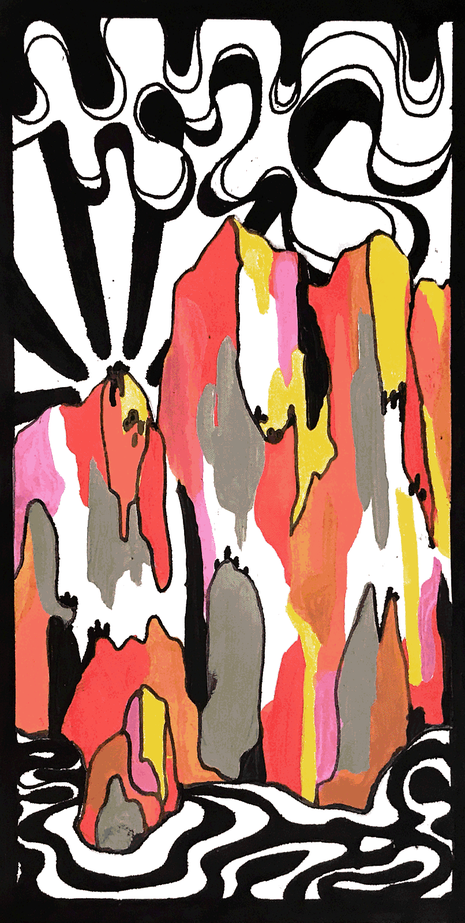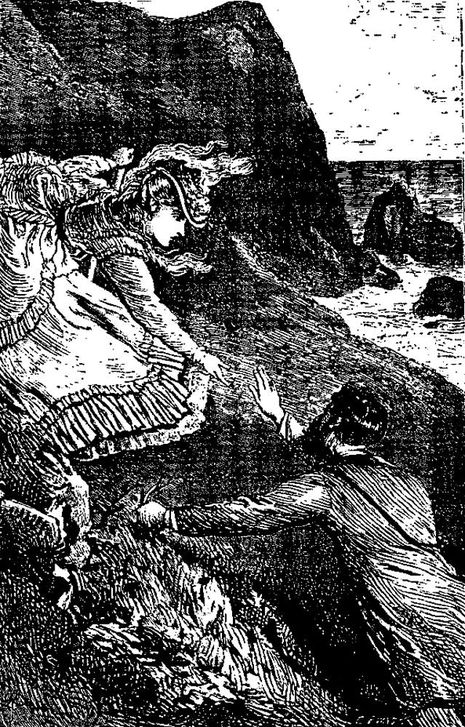The History of Cliffhangers
Arts Editor Famke Veenstra-Ashmore explores the cultural significance of a literary trope which has frustrated and excited us for millennia.

This summer, every time I’ve opened Twitter I’ve been met with a timeline of angry Love Island viewers resentful toward the show’s infamous (and often unnecessary) cliffhangers. It’s an age-old trick that storytellers of all different kinds have lured us in with, creating addictions which we never expected to feed, and preoccupying our minds at the most inconvenient of times.
"It’s both an incentive, and an antidote to our constant desire to know more."
Even in reality TV you become drawn to caricatures of people whom you’d normally never care about – and then without recognising it, you become attached. The churning out of content on almost a daily basis has heightened the prevalence of cliffhangers, with some arguing that they have become less effective or impactful by consequence. But the need to retain the attention of the viewer, the reader, the consumer, is nothing new – and a practise that has proved essential in our arts sector over the last few centuries.
Whilst existing as a concept for even longer, the term ‘cliffhanger’ can be attributed to the Victorian writer Thomas Hardy, whose 1873 novel A Pair of Blue Eyes sees Henry Knight literally hanging off a cliff in the final page of a chapter, left darkly contemplating his death as the sea rages on below. No stranger to 19th century methods of serialisation, Hardy understood the need to provoke curiosity in his audience, who belonged to a completely different reading culture than what we enjoy now. Chapters were published weekly in magazines, which were relatively expensive for small-town populations.

A high rate of illiteracy meant that often these serialisations would be shared and read aloud, understandably eliciting some kind of shared excitement and motivation to continue with the story. Hence, dangerous and sensational endings to Hardy’s chapters are prevalent – and best represented by Knight’s predicament in the aforementioned novel. Other Victorian novelists, such as Dickens, repeatedly employed these kinds of endings, encouraging them to be readily used and accepted by others, leading to their unrivalled modern popularity.
Of course, this reading culture stemmed from the oral tradition. Campfire stories and folklore, myth and narrative song began our interest in finding out ‘what happens next’. Suspenseful endings are also an excellent way of encouraging discussion, derived from individual speculations that can arise from as many perspectives as there are readers. You can imagine that with the absence of widespread media how essential localised discussions about stories and literature was to the development of our current appreciation and approach to reading and the shared experience of a story.
They are of course not limited to the English language; one of the most famous examples of cliffhangers originates from the Arabic One Thousand and One Nights, or the Arabian Nights tales which see a female storyteller delaying her execution by this period of time by using cliffhangers to entertain King Shahryār. The intensely dramatic – almost astonishing – 1001 nights which she gains from the suspense portrays, albeit in a literary sense – the enduring power of cliffhangers.
The psychological effect of cliffhangers is therefore well documented even within fiction. Cliffhangers are equally as frustrating as they are intriguing, and we often fail to refuse ourselves the satisfaction of seeing where the story leads. That’s why modern-day soap operas such as Eastenders and Coronation Street have managed to survive through generations of people. Borrowing Victorian sensationalism, and benefitting from the increased advertising our connected society and media had now, it’s no wonder that these shows have remained so successful and popular.
It’s both an incentive, and an antidote to our constant desire to know more, regardless of the context of the stories we follow. Film has adopted cliffhangers just as successfully as TV, with franchises frequently using sequel hooks to hint at potential continuations, or promote a sequel already in the works. The Marvel Cinematic Universe, for one, is infamous for its post-credits scenes, which reward ‘true fans’ of the films with cameos, bonus materials, and occasionally ‘first-looks’ at subsequent films. Producers of fiction have become expected at harnessing our attention, maintaining a grip on our interest for years at a time – I’m still desperate for the fourth season of Stranger Things.
This literary convention has evolved to be a widely acknowledged psychological tool that we know exists, but absolutely cannot avoid. Writers and filmmakers are still finding ways to surprise us and to tell stories which keep us uncontrollably hooked.
 News / Pembroke to convert listed office building into accom9 December 2025
News / Pembroke to convert listed office building into accom9 December 2025 Features / Searching for community in queer Cambridge10 December 2025
Features / Searching for community in queer Cambridge10 December 2025 News / Uni Scout and Guide Club affirms trans inclusion 12 December 2025
News / Uni Scout and Guide Club affirms trans inclusion 12 December 2025 News / Uni redundancy consultation ‘falls short of legal duties’, unions say6 December 2025
News / Uni redundancy consultation ‘falls short of legal duties’, unions say6 December 2025 News / Gov declares £31m bus investment for Cambridge8 December 2025
News / Gov declares £31m bus investment for Cambridge8 December 2025










